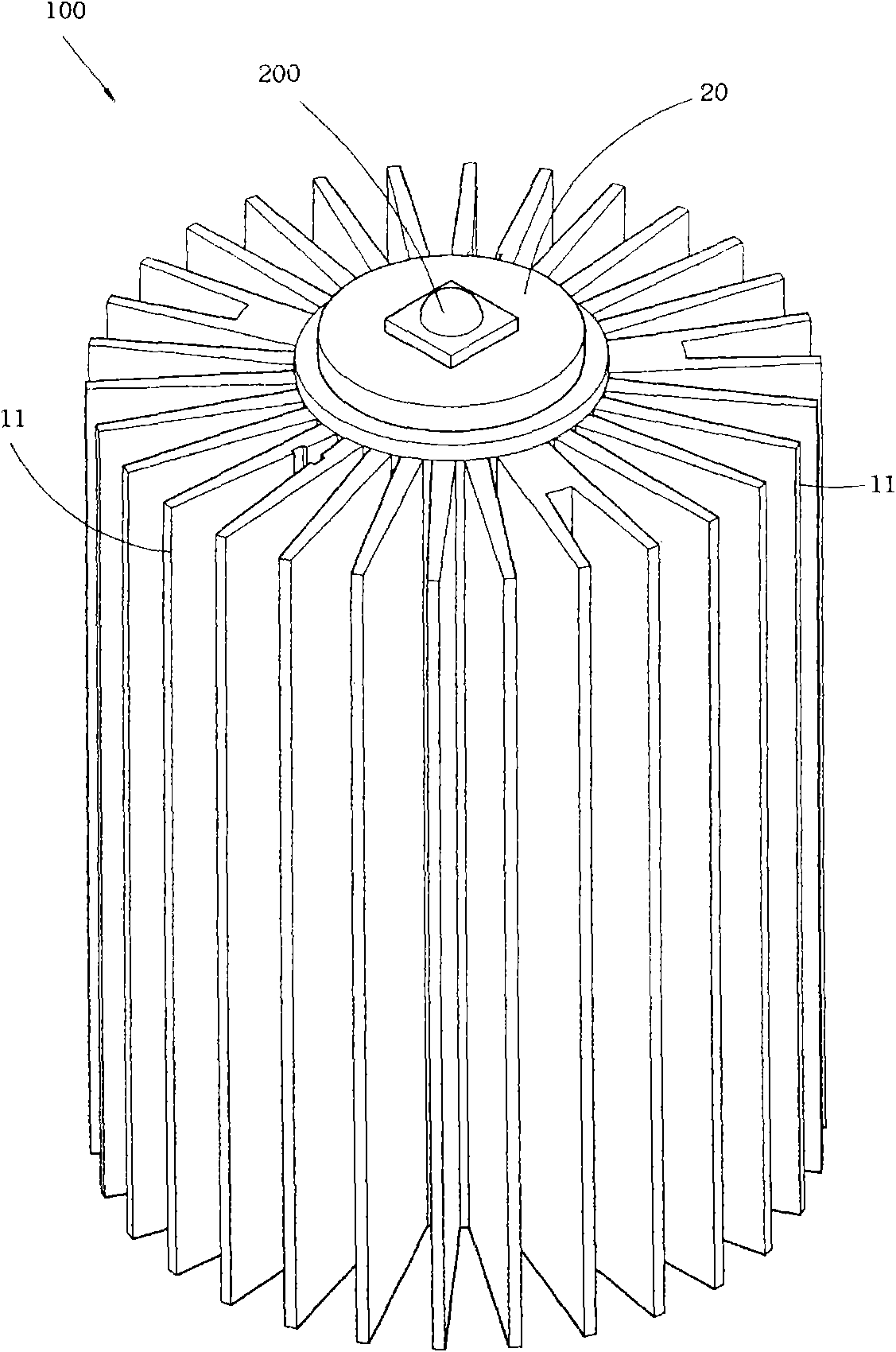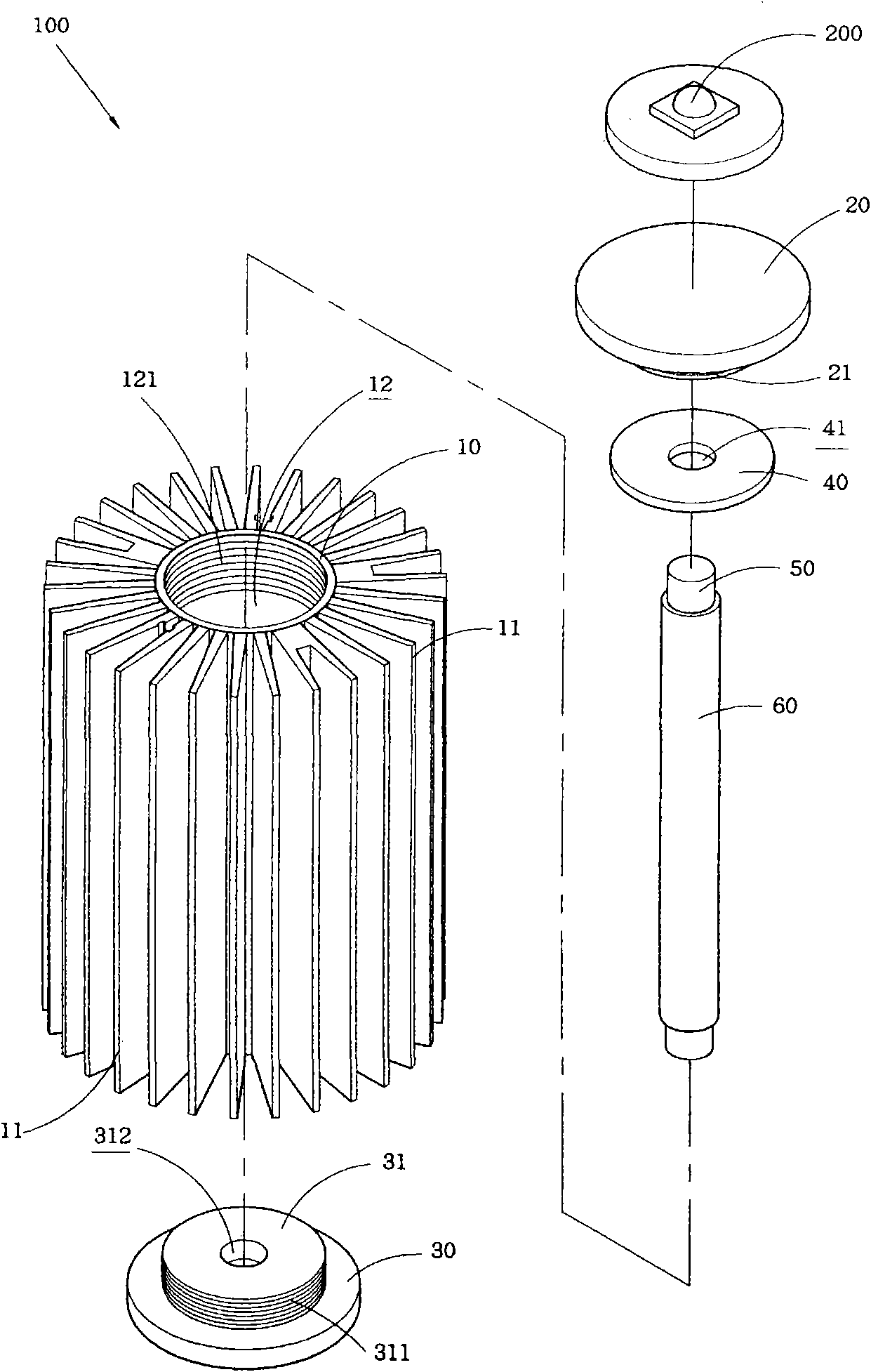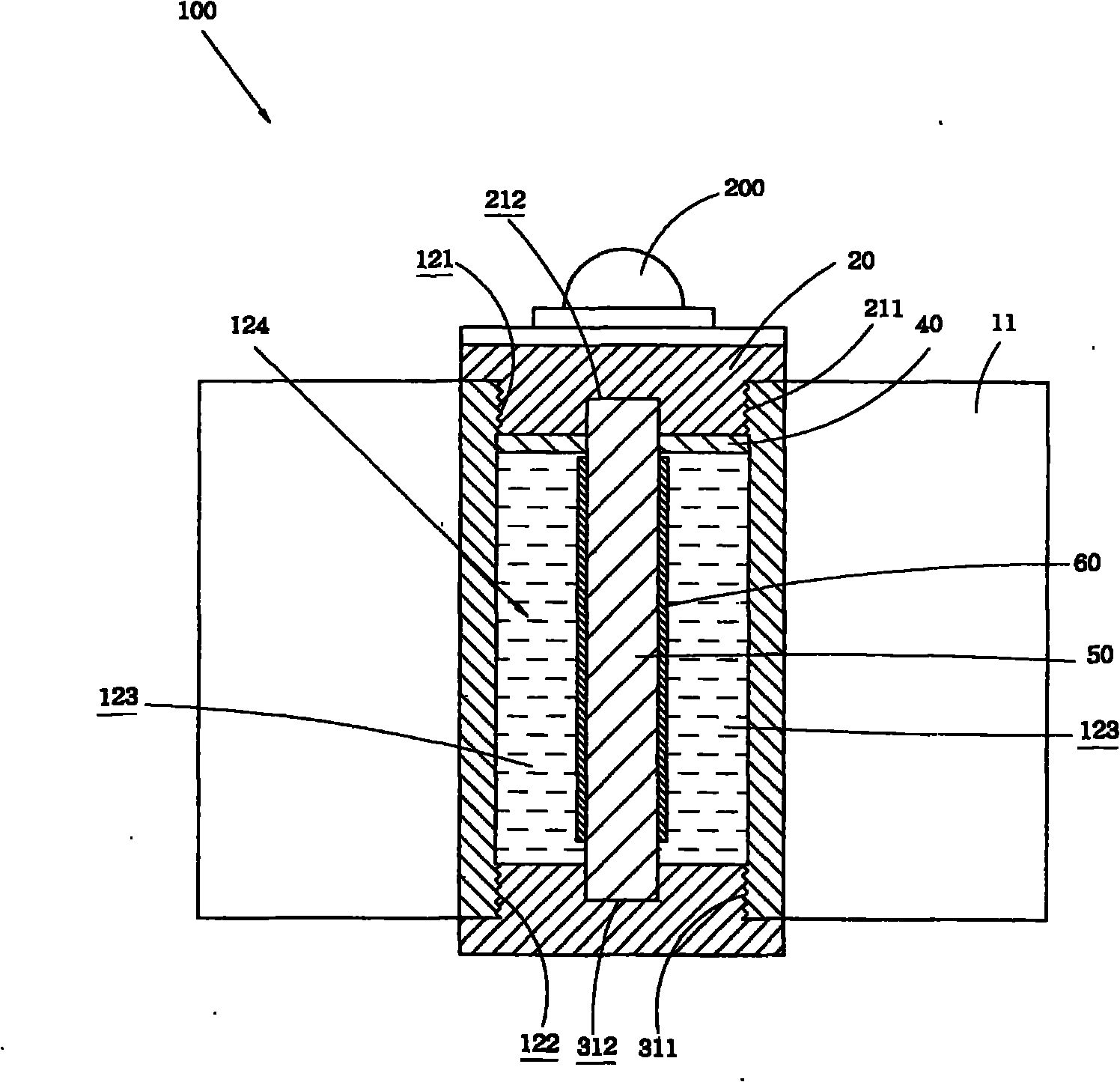[0002] Press, the existing light-emitting
diode (LED) lamps are widely used in various lighting occasions, especially light-emitting diodes can produce energy-saving green energy and
environmental protection effects, but the main application
bottleneck of light-emitting diode lamps is the problem of heat dissipation, because light-emitting diodes Lamps will generate
high heat over time, and the existing
passive cooling fins or radiators for
air cooling are no longer sufficient. In addition to slow heat dissipation, the
cooling efficiency of heat sources or hot spots is also very poor, and LEDs and radiators The heat dissipation temperature of each point on the junction surface is uneven, which does not meet the needs of
industrial utilization, and is gradually eliminated
[0003] There may be improved ones because of this, the pipeline is configured and the cooling liquid or cooling liquid is built into the tube, and then connected to the radiator to provide heat dissipation for the LED lamps. However, due to the slow flow rate of the cooling liquid or cooling liquid, if only relying on heat
Convection promotes the cooling liquid or heat dissipation liquid, which cannot achieve rapid heat dissipation at all, and will limit the installation direction of the
LED lamp load. For example: the LED installation direction is above the radiator, that is, when the projected light is upward. It is difficult to push up the cooling liquid or heat dissipation liquid to flow smoothly and quickly in the way of heat
convection. Therefore, it is usually necessary to add a small electric pump to pressurize the cooling liquid or heat dissipation liquid. However, this method will inevitably make the small electric pump The extra power consumed by the pump is actually contrary to the original intention of energy saving and
environmental protection of LED lamps, and it will only increase the inconvenience and difficulty of the application and installation of LED lamps
[0004] In terms of relevant previous patent technical documents, such as the new patent case of "
LED Lamp" in Taiwan Patent Publication No. 329139, it is disclosed that a hollow
heat pipe is provided in the
LED lamp, and the hollow
heat pipe can accommodate cooling liquid. The heating of the hollow
heat pipe produces a two-
phase change of liquid and gas, so that the
heat energy in the heat pipe is transferred to the external heat dissipation fins for heat dissipation, but the liquid and gas changes of the cooling liquid in the heat pipe must be conducted through air as the medium, in other words , if the cooling liquid has no liquid, gas or gas, liquid cooling changes, that is, heat dissipation cannot be conducted, and the cooling liquid must be conducted through air as a medium after it becomes gaseous, which is no different from the above-mentioned existing
air cooling heat dissipation device, and its conduction The speed and ability will be limited by the pressure change in the heat pipe. Therefore, the heat dissipation speed and ability of the cooling liquid cannot achieve the expected effect. Moreover, after the cooling liquid forms a gaseous state, the temperature in the heat pipe is naturally lowered. The temperature cannot be effectively and quickly lowered, resulting in the unsatisfactory
cooling speed of the gaseous
coolant, and it is difficult to achieve the function of the
cooling cycle of the
coolant[0005] From the embodiments and drawings of the patent specification of the previous case, it can be known that the load heat source, such as light-emitting diodes (i.e., the
light source part), can only be installed on the bottom and both sides of the heat pipe, which can be seen from the scope of its patent and the accompanying drawings figure 1 , image 3 , Figure 7 and Figure 8 It is shown that the light-emitting diode cannot be installed above the heat pipe, because the
coolant cannot fill the entire heat pipe, and it is very difficult and slow to indirectly turn the coolant into a gaseous state by heating the air in the heat pipe, and it is impossible to achieve circulation at all. The effect of heat dissipation, before the coolant turns into a gaseous state, the temperature rise of the LED may exceed the rated value, which may damage the LED and reduce the life of the LED, thus limiting the application status and installation direction of LED lamps , not industrially applicable
[0006] In addition, such as U.S. Invention No. 7,458,706 "
LED LAMP WITH A
HEAT SINK" patent, U.S. Invention No. 2008 / 0043480 "LED MODULE HAVING COOLING APPARATUS" publication and U.S. Invention No. 2009 / 0237891 [
HEAT SINK EQUIPPED DRIVING CIRCUITMODULE
ASSEMBLY FOR
LED LAMP" and other previous cases reveal typical existing air-cooled heat sinks to provide cooling and heat dissipation for LED lighting loads. good question
[0007] In addition, another example is the public case of Chinese Invention No. CN101469856 "
Light Emitting Diode Lamps", which discloses an electronic cooler that needs to be energized and consumes extra power to provide heat dissipation for the
light source of the LED, and Chinese Invention No. CN1979825 "Used for Light Emitting Diodes" Micro-jet
water cooling system for LED" public case reveals the need to use additional power-consuming micro-pumps to pressurize and drive
water flow and fans to provide heat dissipation for light-emitting diode chips. It shows that the above two Chinese invention publications require additional
power consumption. Achieving the heat dissipation function of LEDs, in addition to high equipment costs and occupying installation space, does not meet the needs of energy saving and green energy for LED lamps
[0008] From the above, it can be known that the heat dissipation device of the existing light-emitting diode load is based on the poor heat dissipation speed and efficiency of the air cooling method and the uneven heat dissipation at the junction. For example, in the previous case, the light-emitting diode The installation position of the load is limited, and it cannot be installed at the position where the
light source projects upward. In addition, if an electronic cooler is to be added or a small electric pump is used to pressurize the
cooling fluid to circulate and dissipate heat, it will consume additional power, high cost and In addition to occupying installation space, it does not meet the energy saving and environmental protection requirements of LED lighting loads
 Login to View More
Login to View More  Login to View More
Login to View More 


